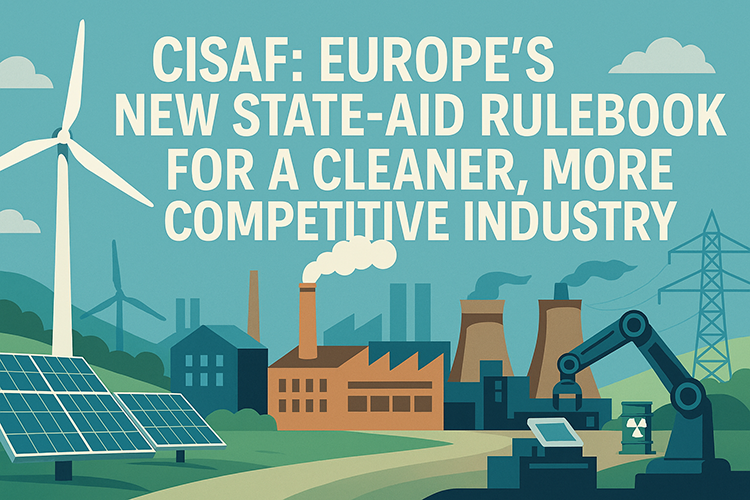CISAF: Europe’s new state-aid rulebook for a cleaner, more competitive industry
The European Commission has adopted a permanent state-aid framework to underpin its Clean Industrial Deal (CID), replacing the crisis-era regime that carried the EU through the energy shock and early cleantech race. The Clean Industrial Deal State Aid Framework, or CISAF, applies from 25 June 2025 to 31 December 2030 and succeeds the Temporary Crisis and Transition Framework (TCTF). Brussels says the change offers a longer planning horizon and clearer pathways for supporting renewables, industrial decarbonisation and net-zero manufacturing while aligning with existing guidelines such as the CEEAG and the General Block Exemption Regulation.
CISAF’s centre of gravity is faster deployment of clean energy and flexibility. It streamlines approval for aid that rolls out renewables and storage—including hydrogen and other low-carbon fuels—and introduces a “target-model” approach to capacity mechanisms so member states can integrate more variable wind and solar without jeopardising security of supply. Designs that meet the model can obtain quicker clearance, while other formats fall back to assessment under the CEEAG.
On the demand side, the framework allows temporary electricity-cost relief for energy-intensive users exposed to global competition, provided beneficiaries invest in decarbonisation. It also opens multiple routes to support emissions cuts at existing plants—electrification, hydrogen, sustainable fuels and carbon capture—through tenders or direct aid with funding caps for very large projects, or via competitive bidding to set maximum aid levels. To anchor supply chains in Europe, CISAF lets governments back new manufacturing capacity for technologies covered by the Net-Zero Industry Act and the production and processing of critical raw materials. In defined cases, “matching aid” can be granted to counter subsidies offered in third countries, and tax measures can accelerate the amortisation of clean-tech investments.
The Commission has already begun applying the framework. In August it cleared an €11 billion French scheme to support three floating offshore wind farms using contracts for difference—one of the first large approvals aligned with the CID’s objectives and an early test of CISAF’s streamlined approach. More national schemes are expected as member states shift TCTF programmes into the new regime.
CISAF is not a blank cheque. Most measures still require prior notification and must run through aid schemes rather than one-off permissions, a constraint that some industry groups say could slow momentum. The Commission argues that predictability—and convergence on capacity-market designs—should cut approval times and reduce fragmentation across the single market. The framework also coexists with the CEEAG and the GBER, which remains available for certain green-aid categories without notification and is being revised to expand simplified options.
Whether CISAF proves to be an efficient catalyst will depend on speed and scale. If member states mobilise competitive tenders for industrial decarbonisation, use matching aid judiciously to keep strategic factories in Europe, and pair renewable build-out with robust flexibility and capacity mechanisms, the framework could give the CID real bite. Early approvals like France’s offshore wind package suggest the pipeline is forming; the next six to twelve months will show whether national budgets and Brussels’ processes can translate the rulebook into projects on the ground.
Source: CMS









